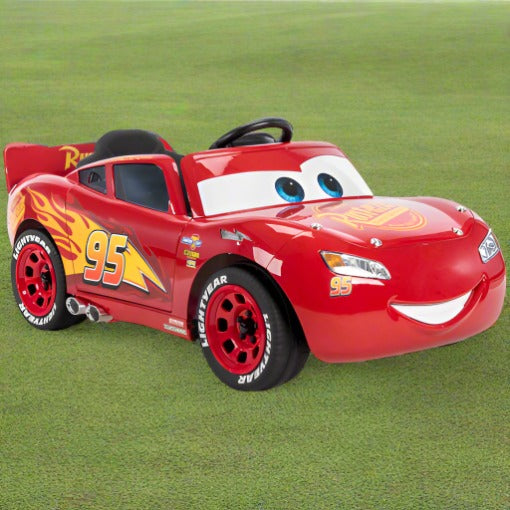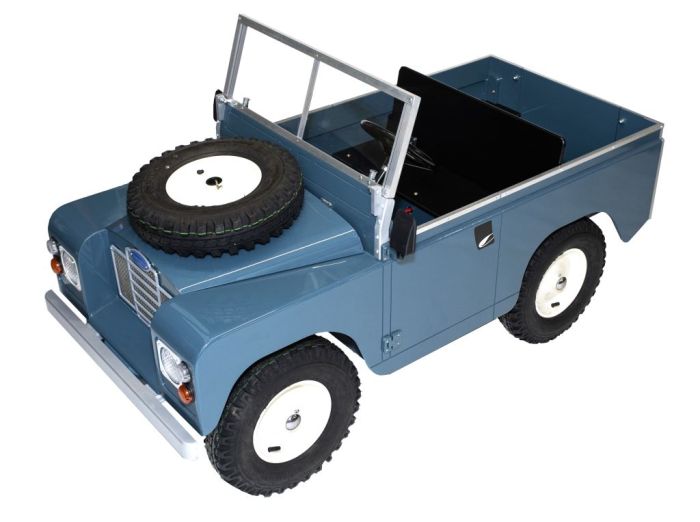Free Advice For Choosing Kids Cars
Wiki Article
What Do I Need To Know About Battery Life And Charging Times Of An Electric Ride-On Kids Car?
Knowing the battery life and life of an electric kid's car is essential to ensure your child enjoys an enjoyable and safe journey. Here's what you should be aware of: Type of battery -
Children's electric cars are rechargeable and use lead-acid battery or lithium-ion battery. Lithium-ion batteries usually have a longer battery lifespan and quicker charging times compared to lead-acid batteries.
Battery Capacity
The capacity of the battery, expressed in ampere-hours (Ah) or Watt-hours (Wh) will determine how long the ride-on automobile can run on one charge. The capacity of the battery is crucial since it determines the length of time the car's ride-on capabilities last before charging.
Run Time -
The run time of an electric ride-on vehicle refers to how long it can operate continuously on a single charge. This varies based on a variety of factors, including capacity of the battery, motor power, terrain, as well as the weight of the driver.
Common run times for electric ride-on vehicles range from 30 minutes to 2 hours on just one charge. But, lithium batteries that are high-capacity will provide longer running time.
Charge time -
The charging time is how long it takes to completely recharge the battery after it has been depleted. Charge times differ depending on the battery's capacity, charger specs and charging methods.
In general, the charging time for an electric ride-on car is between 8 to 12 hours. Some models have faster charging speeds, especially with lithium-ion batteries.
Follow the charging guidelines that are provided by the manufacturer in order to ensure safety of the battery and long-term durability. The battery's performance and its longevity could be affected negatively when it is overcharged or undercharging it.
Charge Method Charge Method
Electric ride-on cars typically include a charger which plugs into a home outlet. Some models come with fast-charging features or a smart charger which monitors the state of the battery, and then adjusts charging rates accordingly.
Check that the charging port and connectors are compatible with the charger that comes with the ride-on vehicle in order to avoid damage to the battery or the electrical system.
Batteries Additional
Certain electric vehicles allow you to purchase additional batteries or extra batteries to increase the duration of play. By having extra batteries available, you can swap out the battery that has been depleted to one that is fully charged to reduce downtime.
Knowing the battery's charge time of a kid's vehicle will ensure that you and your child have fun, uninterrupted playtime as well as exciting adventures. The battery's life can be extended by charging the battery frequently and using the correct charging methods. Check out the most popular Audi ride on car for blog recommendations including electric car ride, toy with car, toy with car, a toy car, kiddies cars, 2 seater electric cars, ride on toy, car on ride, ride on toy, ride on digger and more. .

What Are The Best Cars For Indoor And Outdoor Use For Children?
The specifications of models designed for outdoor and indoor use are different. These are the main differentiators between these models Indoor Use Cars
Size and Weight Cars that are designed for indoor use are typically lighter and smaller in size to move easily in tight spaces such as living rooms, playrooms or hallways. The cars are small enough to fit in narrow spaces, tight corners and also avoid damaging walls and furniture.
Low Ground clearance - Indoor vehicles are built with a the lowest ground clearance to prevent getting stuck on carpets, rugs or thresholds. This permits smooth, continuous motion on indoor surfaces.
Smooth Wheels Smooth Wheels: The wheels on indoor cars are usually made from smooth materials like plastic or rubber. This provides the traction and grip needed for smooth surfaces like hardwood floors laminate floors, tiles. They are designed to minimize the sound of the vehicle and to prevent scratching indoor surfaces.
Limited Speed - Indoor use vehicles typically have lower maximum speeds to assure safe and controlled operation within tight areas. This helps prevent collisions and accidents caused by furniture, such as walls or obstacles found inside.
Outdoor Use Cars -
Durable Construction- Cars that are made for outdoor use are built using durable materials. They can be constructed of tough metal or plastic to withstand outdoor elements like sunlight, moisture, temperature fluctuations and rough handling. The cars are resistant to damage from the elements.
The greater the clearance on the ground is, the better equipped they are to deal with bumps and uneven terrain. This allows the car to traverse rough terrain without damaging or getting stuck.
Traction Tires-The tires on cars made for outdoor use typically include treads to improve traction and grip on uneven or slick surfaces. This helps ensure stability and control over outdoor terrain to prevent sliding or skiing.
Weather Resistant - Outdoor use automobiles may have weather-resistant parts like sealed electronics, waterproof casings or rust-resistant materials to protect against environmental damages and moisture. This allows them to withstand the elements of rain, mud, or puddles without compromising the performance.
High-Speed - Vehicles designed to be used outdoors have higher speeds as they're designed to withstand the wide open areas and distances that can be encountered in nature. Children can enjoy an exciting and thrilling experience when out in the open.
When considering these design features and features, parents are able to pick a child's vehicle that best suits their particular requirements for use and the surroundings that they intend to use it, whether inside or outside. They can then ensure your child is safe as well as a memorable experience. Have a look at the recommended discover more about kids ride on cars for blog info including toy and car, lambo toy car, digger ride, riding digger, childrens digger, ride of car, ride on toy, electric car ride, toy cars, ride on digger and more. .

What Factors Should I Take Into Consideration Prior To Buying An Electric Vehicle For My Kid? Pros And Pros?
When you're looking to purchase an electric child's car, you should be aware of a number of aspects. Here are a few key factors to consider and details about the cost sizes, dimensions and pros and cons.
When choosing an electric car to your child, take into consideration the size and age of your child. Cars that are small and lightweight may be more suitable for smaller and younger children, whereas older and larger children might need cars with ample space.
Cars Dimension and Weight –
Models for electric cars for kids are available in various sizes. From tiny to large-scale replicas, they're all readily available. Consider the size and weight of the car in relation to your child's size, age, and power, and the available space to store and playing.
Price Band
Electric cars for kids aren't cheap, based on a myriad of variables. This includes dimensions, features brands and the build. The smaller models are typically less expensive, with costs that range from $50 to $200. On the other hand, larger-scale models range from $200-$800 or more for top-quality replicas, which are licensed.
Pros and cons
Pros -
Children's electric cars offer endless hours of fun, imaginative games, and the opportunity to drive their own vehicle.
Motor Skill Development: Driving an electric vehicle aids in developing fine motor and spatial awareness skills in children.
Outdoor Play - Electric cars encourage physical and outdoor play by encouraging exploration and exercise.
Realistic Features- Many electric children's vehicles have realistic features like functioning headlights and horns. They also support MP3 players, which improves the overall experience.
Cons
Cost – High-quality electric children's toys, specifically replicas licensed from well-known car manufacturers could be costly.
Battery Life The power of electric vehicles is provided by rechargeable batteries. These may have a short running time and may require regular charging.
Safety Concerns Electric vehicles can be prone to dangers for safety like collisions, falls, or traps. This is especially true in the event that the vehicle isn't utilized with care and supervision.
Maintenance and assembly - Certain electric vehicles require assembly prior to they arrive and ongoing maintenance. This includes cleaning, battery maintenance and occasional repairs or parts replacements.
Accessories and Features
Consider the accessories and features available on the electric car for kids, which include working headlights and horn sounds. Also, take into consideration whether the vehicle has a parental remote control or seat belts. Choose a car that comes with the features and accessories that match with the preferences of your child.
The best electric kid's car will depend, in end on your child's age as well as their interests and size and also your budget. Take the time to look into and compare different models, read reviews, and think about the pros and cons prior to making your choice. Have a look at the top remote control childrens cars kidscars.co.uk advice for blog advice including car toy car toy, ride ons, toy with car, a toy car, electric rideons, toy a car, ride on car, toy ride, childs electric ride on car, ride ons and more. .
